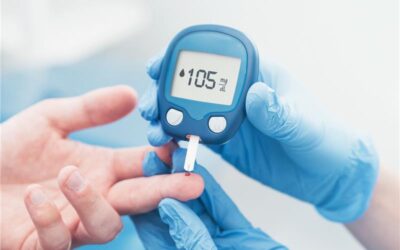Case Study
Biomarker Discovery in Insulin Resistance
Insulin resistance is measured based on a panel of biomarkers.
About
Study cohorts:
RISC (Relationship of Insulin Sensitivity to Cardiovascular Risk) is a prospective, observational cohort study, where clinically healthy participants (30 to 60 years of age, including both men and women) were recruited from 19 centers in 13 countries in Europe.
The Botnia study is a family-based, observational familial study, which included 2770 nondiabetic family members and/or their spouses from the west coast of Finland aiming at identifying diabetes susceptibility genes.
The Challenge
Insulin resistance is developed when glucose builds up in the bloodstream instead of being absorbed by the body’s cells. Insulin resistance is associated with the development of prediabetes, type 2 diabetes, hypertension, dyslipidemia, cardiovascular disease, stroke, and other malignancies. Insulin resistance can be present more than 10 years prior to diabetes. However, the current procedures do not measure insulin resistance directly and are predominantly confined to clinical research settings due to cost and time constraints. Therefore, the identification of novel biomarkers for the detection of Insulin resistance subjects remains an unmet need.
Several models such as HOMA-IR, QUICKI, Matsuda index, Stumvoll index, and oral OGIS have been used for the assessment of insulin resistance but require multiple blood samples and are not practical for routine screening purposes.
Further, a universal diagnostic test that will accurately predict insulin resistance irrespective of age, sex, BMI, and genetics is required.
Metabolon Insight
Identification of Biomarkers:1From the RISC population, plasma samples were collected from 399 fasting non-diabetic subjects, and the Metabolon Global Discovery Panel measured 485 biochemicals in each sample. Euglycemic clamp, the gold standard for determining insulin sensitivity, measured total glucose disposal which was negatively correlated with α–hydroxybutyrate, an organic acid derived from α-ketobutyrate. Depending on α–hydroxybutyrate levels, insulin-resistant and sensitive subjects could be separated clearly, which correlated to the oral glucose tolerance test (OGTT). Statistical analysis revealed that α–hydroxybutyrate was significantly associated with insulin resistance independent of collection site, sex, age, and body mass index (BMI), with an odds ratio of 2.84 and 70% classification accuracy. The majority of other metabolites identified in this study were related to α–hydroxybutyrate metabolism and biosynthesis. Additional highly correlated metabolites to insulin sensitivity included L-GPC (linoleoylglycerophosphocholine) and stearate.
Development of algorithm:2 RISC study was used in an iterative process of algorithm development to define the best combination of metabolites for predicting the M value (indicates average blood glucose level) derived from the euglycemic clamp (Mwbm). The Mwbm value indicates insulin-mediated, whole-body glucose disposal (mg/kg-1/min-1, whole body mass). The Quantose™ algorithm was developed by Metabolon and optimized using 4 variables: fasting insulin, α–hydroxybutyrate, L-GPC, and oleate. The related fatty acid oleate was used as a replacement for stearate, as it had undesirable analytical properties. Insulin, α–hydroxybutyrate, and oleate correlated negatively with Mwbm and positively with L-GPC. The Quantose®-calculated M (MQ) correlated with Mwbm with an R-value of 0.68.
Verification across population cohorts:3 To verify if the identified biomarkers can predict insulin resistance in other population cohorts, metabolon’s global biochemical profiling correlation analysis was done in the Botnia Prospective Study. Like the RISC study, insulin sensitivity correlated positively with α-hydroxybutyrate and negatively with L-GPC, matching the OGTT predictivity in the Botnia Prospective Study. Areas under the ROC curves were 0.791 (RISC) and 0.783 (Botnia), which illustrates the diagnostic ability of the identified biomarkers. Further, these results were verified in vitro in β-cells.
The Solution
TheMetabolon Global Discovery Panelidentified potential biomarkers for insulin resistance using RISC and Botnia population cohorts.
The Quantose® algorithm developed by Metabolon calculates Mwbm, which accurately corresponds to the euglycemic clamp M value.
Insulin resistance biomarkers identified by Metabolon are independent of familial diabetes, sex, age, BMI, and fasting glucose across different population cohorts at baselines and after years of follow-up.
The Outcome
The Metabolon’s Quantose® algorithm identified individuals at risk for developing impaired glucose tolerance in a 3-year follow-up better than measures such as fasting insulin, fasting glucose, homeostatic model assessment of insulin resistance, and BMI.
Quantose® can accurately predict insulin resistance based on a panel of biomarkers comprised of organic acid (α-hydroxybutyric acid), 2 lipids (oleic acid and L-GPC) and insulin, using a single fasting blood sample.
Quantose® overcomes existing shortcomings of current insulin resistance tests and addresses unmet medical need for routine screening, prospective study, risk assessment, and therapeutic monitoring in type 2 diabetes patients.
References
1. Gall WE, Beebe K, Lawton KA, et al. alpha-hydroxybutyrate is an early biomarker of insulin resistance and glucose intolerance in a nondiabetic population. PLoS One. May 28 2010;5(5):e10883. doi:10.1371/journal.pone.0010883
2. https://www.metabolon.com/solutions/global-metabolomics/
3. Cobb J, Gall W, Adam KP, et al. A novel fasting blood test for insulin resistance and prediabetes. J Diabetes Sci Technol. Jan 1 2013;7(1):100-10. doi:10.1177/193229681300700112
4. Ferrannini E, Natali A, Camastra S, et al. Early metabolic markers of the development of dysglycemia and type 2 diabetes and their physiological significance. Diabetes. May 2013;62(5):1730-7. doi:10.2337/db12-0707







